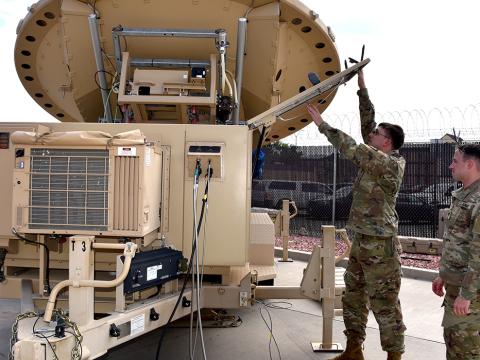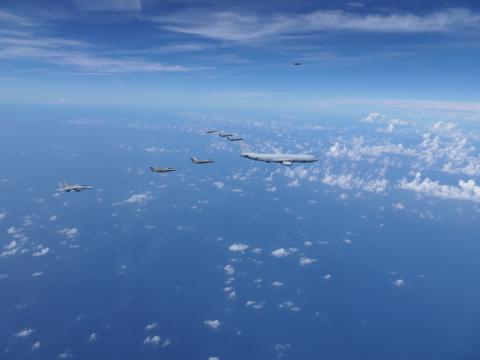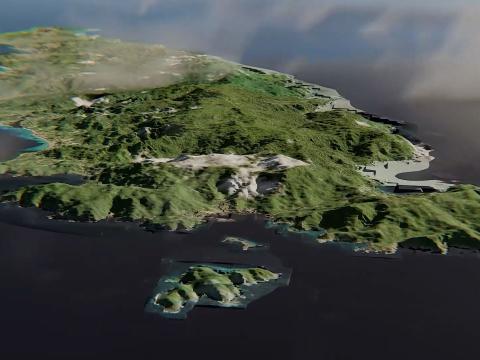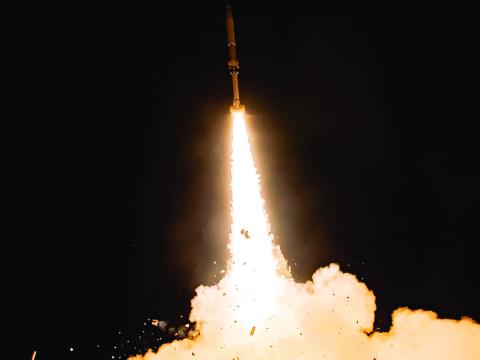Terabytes From Space
In the midst a geospatial intelligence (GEOINT) renaissance, the National Geospatial-Intelligence Agency (NGA), is harnessing new tools, sensors, compute, storage and artificial intelligence (AI) to provide the intelligence community and military with targeting, warning and safety of navigation information, explained Vice Adm. Frank Whitworth, USN, director of the NGA.
Whitworth spoke at the 2025 Intelligence and National Security Summit, hosted by AFCEA and INSA, September 18-19, at the Gaylord National Resort.
“We are in a golden age, frankly, for GEOINT,” Whitworth said.
The NGA director cited the convergence of available sensors, especially space-based sensors that bring in a lot of data, combined with the availability of advanced technologies, including AI and machine learning that aides the agency’s processing and dissemination.
“And while I won’t detail exactly what the percent increase in terabytes from space will be, it is substantial over the next decade,” the vice admiral stated.
Add in a “really energized” commercial sector providing imagery—and no longer new NGA policies that support this procurement and use—and the availability of data and information is considerable. Going forward, Whitworth sees the agency as having “insatiable demand” to leverage the maximum amount available from commercial imagery.
That level of analysis, data processing and work means the NGA has to be efficient and effective.
“We need to ensure that we can absolutely match the data,” Whitworth stated. “We don’t want all that data, all of those images, all those files, falling on the cutting room floor—and they’re very dense files, by the way.”
Not surprisingly, the agency harnesses over half of the intelligence community’s cloud. The amount of compute and storage also will only continue to grow, as well as the need for the NGA’s continued adroit compression capabilities.
“We are kind of an industry standard right now when it comes to compression of massive files,” the director said.
The NGA is continuing its year of emphasis on AI, part of which includes making sure responsible standards are integrated into its AI operations. AI must be fully tested, with evaluated training data and processes that adhere to the agency’s principles.
Somebody has to raise his or her right hand and say, ‘I will take responsibility for GEOINT and for the community and ensure that we do have AI standards that are responsible.’
“While statutorily it is only a coordination responsibility, it is still pretty important,” Whitworth said. “Somebody has to raise his or her right hand and say, ‘I will take responsibility for GEOINT and for the community and ensure that we do have AI standards that are responsible.’ We just want to make sure that we don’t have something get into a COCOM [combatant command], or into a service, or into the interagency.”
On the flip side, Whitworth does not want the agency to have “something like an ATO,” or authority to operate clearance process used software and networks for AI “where everyone sits and waits.”
“I'm very confident in our way ahead,” he shared. “This is why I'm excited about the availability of AI.”
Despite the cuts to his staff under the president’s DOGE efforts, the director remains a champion to his staff’s qualifications and capabilities, saying the “human dimension” was crucial to the agency’s success.
The agency also will benefit from the Proliferated Warfighter Space Architecture that the Space Development Agency is developing with other agencies and the Space Force, Whitworth stated.
The Intelligence & National Security Summit is organized by AFCEA International and INSA. SIGNAL Media is the official media of AFCEA International.




Comments